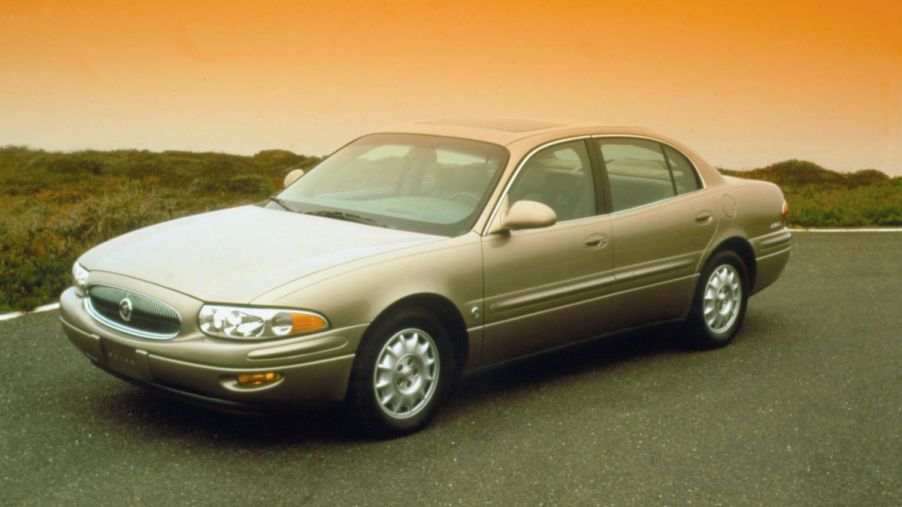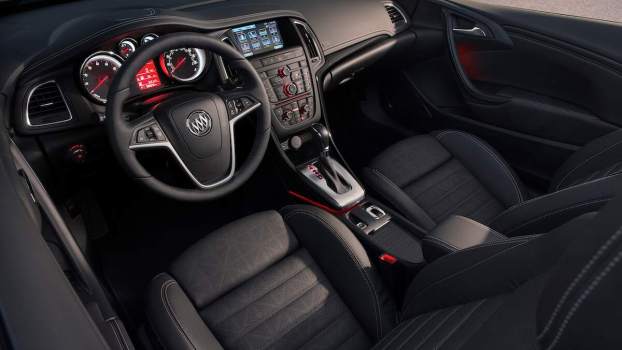
Buick LeSabre Has Over Half of the 10 Most Common Buick Problems
The Buick LeSabre was once an aspirational vehicle and a common site in suburban neighborhoods. A midline model for Buick, it was a step up from the Chevrolet Impala, Pontiac Bonneville, and Oldsmobile 88. However, like those vehicles and the population that drove them, they eventually retired and were put out to the pasture.
The LeSabre soldiered on into the 21st century and still makes a fine, inexpensive, used car today. However, with the youngest model going on 18 years old, it’s not without its problems. According to RepairPal, Buicks have a common set of problems, and the LeSabre has over half of the 10 most common ones.
A brief history of the Buick LeSabre
Launched in 1959, the LeSabre was Buick’s full-size, mid-trim level car that slotted above the Century and Special but below the Electra and Park Avenue. Initially offered as a coupe, convertible, sedan, and wagon, it was eventually only offered as a sedan by the dawn of the 1990s.
Part of what makes the LeSabre a good car today is the legendary Buick 3.8 liter V6, also known as the 3800 and 3800 Gen II and Gen III engines. The engines offered comparable performance to many V8 engines of the time (back when V8 engines made 200 horsepower) and proved to be smooth, fuel-efficient, and dependable. Performance was respectable, with a 0 to 60 mph time of about 9 seconds and an estimated fuel economy of 18 mpg in the city and 28 mpg on the highway.
As a spacious, comfortable car, the LeSabre has the classic “floaty” feel of a big American car. It was intended to eat up miles of interstate, hauling families to visit relatives or amusement parks during summer vacation. These values and its performance made it Buick’s most popular model, even up until 2005, when the Lucerne replaced it.
Today the LeSabre makes a good, inexpensive car. It’s cheap to own and repair, and if you’re lucky, you can find one with low mileage in pristine condition for a low price.
Common Buick and Buick LeSabre problems
Like all older cars, the Buick LeSabre is not without its problems. Based on data from RepairPal, here are four of the most common.
Erratic shifting of the automatic transmission
Transmissions on the Buick LeSabre are generally reliable but can occasionally act up with erratic shifting. The most common cause of this issue is a failing pressure control solenoid.
This problem has occurred in many cars from 1991 onwards, with an average of 123,000 miles on the odometer. RepairPal doesn’t have data on the cost for this repair, but according to YourMechanic, the replacement part runs about $84, and the repair cost is around $470 with labor.
Improper HVAC temperature and/or air delivery due to failed mode door actuator
HVAC door actuators, or blend actuators, are a common problem for many Buicks, including the LeSabre. When this part breaks, it causes air to be delivered to the wrong location, like the dash vent or floor, and will affect the temperature of the car’s interior.
This problem occurs in 1990 and newer cars with an average mileage of 129,000. The cost for an A/C diagnosis is around $100, with the repair cost ranging between $198 and $220.
Engine stalling due to mass air flow/crankshaft position sensor failure
There are several reasons why an engine will perform poorly, but a common issue with the LeSabre is the mass air flow or crankshaft position sensor. This problem can be tricky to diagnose and typically costs between $272 and $425.
The mass air flow/crankshaft position sensor failure can occur in cars manufactured from 1990 onwards and typically causes problems in vehicles with over 134,000 miles.
Engine oil leak from intake manifold gasket
Another common issue is that the intake manifold gasket can develop oil leaks. This causes the engine’s oil to contaminate the fuel/air mixture and cause performance issues. To fix the problem, the manifold gasket must be replaced, typically costing between $763 and $827.
Most model years after 1990 can be affected by the intake manifold gasket issue, which occurs in cars with more than 110,000 miles.
The most common Buick problem is fuel level sensor failures
The most common problem for all Buicks, including the LeSabre, are fuel level sensor failures. When the fuel level sensor fails, the car’s fuel gauge shows the incorrect fuel level, which can cause people to run out of gas. The fuel level sensor has to be replaced to fix the issue, costing around $679 to $793.
This problem affects 1996 and newer LeSabres with an average mileage of 120,000. When the problem occurs, it’s recommended to replace the fuel pump, which is included in the above estimate.




